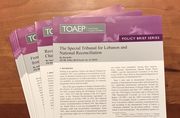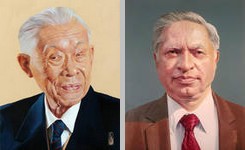Table of contents:
Element:
ICC
In the Katanga Trial Judgement, the Trial Chamber held that:
"The Chamber notes that the [French version] of the ‘chapeau’ of article 8(2)(c) refers to direct participation in hostilities whereas the [French version] of the Elements of Crimes refers to active participation in hostilities. In the Chamber’s view, and for the purposes of this article alone, the criterion of direct participation in hostilities must be used. The Chamber will give precedence to the ‘chapeau’ of the article, which is consistent with article 3 common, which constitutes the basis of article 8(2)(c). Furthermore, the preparatory work shows that the drafters of the Statute intended that there should be no difference between wilful killing under article 8(2)(a) and murder under article 8(2)(c)(i). The Chamber notes, moreover, that the ad hoc tribunals give those two terms a similar meaning.
Consequently, persons protected by virtue of article 8(2)(c) lose that protection only through direct -and not active - participation in hostilities and for the duration of that participation. The Statute, treaty law and customary law do not define direct participation in hostilities. The Chamber observes, however, that the Commentary on article 13(3) of Protocol II defines it as ‘acts of war that by their nature or purpose str[ike] at the personnel and materiel of enemy armed forces’."[156]
The Pre-Trial Chamber in the Banda and Jerbo case held that
"In relation to the second objective requirement of the crime of violence to life in the form of murder pursuant to article 8(2)(c)(i) (whether committed or attempted), it is necessary to establish that at the time of the commission of the crime the victims were taking no active part in the hostilities."[1]
ICTY
According to the Tadić Trial Judgment:
"The protection embraces, at the least, all of those protected persons covered by the grave breaches regime applicable to conflicts of an international character: civilians, prisoners of war, wounded and sick members of the armed forces in the field and wounded, sick and shipwrecked members of the armed forces at sea."[2]
"Whether, at the time of the alleged offence, the alleged victim of the proscribed acts was directly taking part in hostilities, being those hostilities in the context of which the alleged offences are said to have been committed. If the answer to that question is negative, the victim will enjoy the protection of the proscriptions contained in Common Article 3."[3]
"It is unnecessary to define exactly the line dividing those taking an active part in hostilities and those who are not so involved. It is sufficient to examine the relevant facts of each victim and to ascertain whether, in each individual's circumstances, that person was actively involved in hostilities at the relevant time."[4]
According to the Semanza Trial Judgment:
"...the possible presence of combatants within groups of protected persons does not deprive those who are non-combatants of their protected status."[5]
According to the Kvočka et al. Trial Chamber:
"An additional requirement for Common Article 3 crimes under Article 3 of the Statute is that the violations must be committed against persons "taking no active part in the hostilities." In the present case, none of the victims was injured during combat operations and the vast majority was unarmed persons held in detention camps, so that requirement is satisfied."[6]
As stated by the Jurisdiction Decision in Tadić
"This conception is reflected in the fact that beneficiaries of common Article 3 of the Geneva Conventions are those taking no active part (or no longer taking active part) in the hostilities."[7]
According to the Tadić Trial Judgment,
"the protection embraces, at the least, all of those protected persons covered by the grave breaches regime applicable to conflicts of an international character: civilians, prisoners of war, wounded and sick members of the armed forces in the field and wounded, sick and shipwrecked members of the armed forces at sea"[8]
"It is unnecessary to define exactly the line dividing those taking an active part in hostilities and those who are not so involved. It is sufficient to examine the relevant facts of each victim and to ascertain whether, in each individual's circumstances, that person was actively involved in hostilities at the relevant time."[9]
According to the Trial Chamber in Boškoski and Tarčulovski
"As Common Article 3 protects persons taking no active part in the hostilities, it must be established that the victims of the alleged violation were not taking an active part in the hostilities at the time the crime was committed"."[10]
"The Chamber refers to its findings made elsewhere that in relation to [...] [murder], four victims were taking no active part in the hostilities, while the Prosecution has not proved beyond a reasonable doubt that three others were not taking active part in hostilities at the time that they were killed. Hence Article 3 of the Statute applies only to the four victims taking no active part in hostilities"."[11]
"With regard to [...] [cruel treatment], the Chamber is satisfied that none of the victims were taking an active part in hostilities at the time the crimes were committed. In particular it notes its findings that the crimes of cruel treatment were perpetrated on the victims while they were unarmed and in some form of detention. Even had some of these victims been participating actively in hostilities prior to their detention, which is contrary to the Chamber's finding, as soon as they were detained by the Macedonian police, and also because they were unarmed, they would have ceased to be taking an active part in hostilities, and thus would have come under the protection of Common Article 3"."[12]
In the Lukić and Lukić case, the Trial Chamber said
" For each crime charged under Article 3 of the Statute and Common Article 3, the Prosecution is required to prove that the victims were "persons taking no active part in hostilities", including by virtue of being civilians and persons who have laid down their arms or who have been placed hors de combat by virtue of sickness, wounds, detention or any other cause [...] Relevant to the Trial Chamber's determination of the victim's protection under Common Article 3 is the specific situation of the victim at the moment the crime was committed. The Trial Chamber considers that relevant factors in this respect include the victim's activity, clothing, age and gender, as well as whether or not the victim was carrying a weapon."[13]
The Trial Chamber in the Mrkšić et al. case held that
"Whereas under Article 3 of the Statute the situation of a victim at the time of the offence may be relevant to its status, the notion of "civilian" under Article 5 of the Statute, as correctly noted by the Trial Chamber, is not determined by the position of the victims at the time of the commission of the underlying crime."[14]
The Trial Chamber in the Prlić and al. Case explained that
"According to the Appeals Chamber, a person is considered to have taken part in hostilities within the meaning of this section when she participated in " acts of war which by nature or purpose are likely to cause actual harm to the personnel and equipment of the enemy's armed forces." A Trial Chamber must therefore examine the question of participation in hostilities in each case, in light of the personal circumstances of the person at the time of the facts. The Appeals Chamber also pointed out that since participation in hostilities can be intermittent and discontinuous, a Trial Chamber could conclude that there was such participation if there is a nexus between the actions of the person and the alleged act of war. The Chamber will conduct this analysis on a case by case basis, considering the circumstances of each case."[15]
Prosecutor v. Jovica Stanišić and Franko Simatović, Case No. IT-03-69-T, Judgement (TC), 30 May 2013, para. 957:
"957. Status of Victims. The final requirement for the application of an Article 3 charge based on Common Article 3 is that the victim was not actively participating in the hostilities at the time the offence was committed. The Appeals Chamber has explained that active participation in hostilities means participating in acts of war intended by their nature or purpose to cause actual harm to the personnel or equipment of enemy armed forces. Protected victims include members of armed forces who have laid down their arms and those placed hors de combat by sickness, wounds, detention, or any other cause. The perpetrator must know or should have known the status of the victims as persons taking no active part in the hostilities."
In the Stanišić and Simatović case, the Trial Chamber said:
"The final requirement for the application of an Article 3 charge based on Common Article 3 is that the victim was not actively participating in the hostilities at the time the offence was committed. The Appeals Chamber has explained that active participation in hostilities means participating in acts of war intended by their nature or purpose to cause actual harm to the personnel or equipment of enemy armed forces."[16]
Prosecutor v. Vlastimir Dordevic, Case No. IT-05-87/1-A, Judgement (AC), 27 January 2014, paras. 522-523, 747:
"522. The Appeals Chamber turns to Dordevic’s contention that the Trial Chamber erred in its definition and application of an individual’s civilian status in an internal armed conflict. Dordevic argues that the Trial Chamber reversed the burden of proof when it considered that the presumption of civilian status, as set out in Article 50(1) of Additional Protocol I, applied to internal armed conflict despite its absence from the text of Article 13 of Additional Protocol II.1713 The Appeals Chamber recalls that the principle contained in Article 50(1) of Additional Protocol I, that in cases of doubt a person shall be considered a civilian, is limited to the expected conduct of a member of the military.1714 In contrast, where the criminal responsibility of an accused is at issue, the Prosecution bears the burden of proof concerning the civilian status of victims.1715 Ðorđević’s submissions fail to acknowledge these two different standards. As a result, he misrepresents two distinct sets of findings made by the Trial Chamber: (i) the findings made in relation to the disproportionate use of force by Serbian forces as an indicator of the existence of the JCE1716 and (ii) the findings made in relation to the commission of crimes by these forces.1717 In discussing the first set of findings and determining whether the disproportionate use of force by the VJ and the MUP was “a further indication that the purpose of the operations was to perpetuate the crimes established”,1718 the Trial Chamber stated that, in an internal armed conflict, in case of doubt an individual should be presumed to be a civilian.1719 It considered that this principle entailed, at a minimum, that attacking forces assess and determine whether there is any doubt as to the status of the target.1720 It then concluded that the Serbian forces’ excessive use of force showed that no such assessments were made.1721 Accordingly, the Appeals Chamber is satisfied that the Trial Chamber did not relieve the Prosecution of its burden to prove that the victims were civilians or otherwise protected persons under IHL, nor did it apply an “over-expansive definition” of civilian.1722 The Appeals Chamber will now consider whether the Trial Chamber properly applied the burden of proof in finding that Serbian forces committed the crimes of murder, deportation, and other inhumane acts (forcible transfer)."
"523. With respect to the crime of murder, the Trial Chamber correctly recalled that Common Article 3 of the Geneva Conventions is applicable to internal armed conflicts and protects persons not taking active part in hostilities.1723 The Appeals Chamber recalls that persons taking no active part in hostilities include persons in detention1724 and that the “well-established jurisprudence of the Tribunal has repeatedly affirmed that the body proper of the Geneva Conventions cannot be interpreted in such a way as to afford lesser protection to individuals than that which is afforded by common Article 3”.1725 The Appeals Chamber observes that the Trial Chamber performed an extensive analysis of the circumstances surrounding the killings and took into account numerous factors in reaching its findings that the great majority of the victims were detained, unarmed, or otherwise taking no active part in hostilities at the time of their death.1726 Accordingly, the Appeals Chamber, Judge Tuzmukhamedov partially dissenting, finds that the Trial Chamber reasonably concluded that the victims were entitled to protection under Common Article 3(1) and Article 13(2) of Additional Protocol II. Dordevic has therefore failed to show that the Trial Chamber erred in reaching this conclusion."
"747. The Appeals Chamber recalls in this regard that in addition to civilians taking no active part in hostilities, victims of murder as a war crime under Article 3 of the Statute include any individual not taking active part in hostilities, “including members of armed forces who have laid down their arms and those placed hors de combat by sickness, wounds, detention or any other cause”. 2225 For murder as a crime against humanity under Article 5 of the Statute, while the chapeau requirements necessitate proof that the act of the perpetrator was part of a widespread or systematic attack “directed against any civilian population”,2226 this does not mean that the individual victims of crimes against humanity must be civilians.2227 Persons hors de combat may also be victims of murder as a crime against humanity, provided that they were victims of a widespread and systematic attack against the civilian population, and that all the elements of the crime were met.2228 Therefore, even if some of the victims were members of the KLA, as Dordevic suggests, if they had laid down their arms at the relevant time, they were no longer legitimate targets."
ICTR
The Trial Chamber in the Bagosora and al. case held that
"At the time of the alleged violations, most of the victims were primarily unarmed Tutsi civilians who were either murdered in their homes, at places of refuge such as religious sites and schools, or at roadblocks on their way to these sanctuaries while fleeing the resumption of hostilities or other attacks."[17]
"There is evidence that the refugees at Nyundo Parish used traditional weapons to defend themselves against the repeated attacks by militiamen. The Chamber is not satisfied that the use of rudimentary defensive weapons changes the status of the victims. Even if those with weapons for self-defence could be characterised as combatants, their possible presence within groups of refugees does not deprive those who are non-combatants of their protected status."[18]
SCSL
According to Taylor Trial Chamber
"As the victims were captured civilians, the Trial Chamber is satisfied beyond reasonable doubt that the victims were not taking part in hostilities at the time of the amputations."[19]
ECCC
On the "protected persons" status, the Kaing Trial Chamber found
"No fewer than 345 Vietnamese prisoners of war and civilians were detained at S-21 and constituted protected persons under the Geneva Conventions of 1949. Vietnamese detainees were registered as either soldiers (122 entries), Vietnamese civilians (79 entries) or spies (144 entries). Vietnamese prisoners of war, many of whom were captured on the battlefield, entered the S-21 complex in their military uniforms. Amongst the Vietnamese civilians were women, as well as children brought to the S-21 complex along with their parents. The Accused stated that "spies" were classified as such on order of his superiors but were in fact either civilians or combatants.
"Further, due to their real or perceived allegiance with Vietnam, some Cambodians, originating primarily from the East Zone, were detained and executed as Vietnamese sympathisers.Although Cambodian nationals, they were viewed by the CPK as having allegiances to Vietnam and as a threat to DK. Accordingly, the Chamber considers that these Cambodian detainees were also protected persons within the meaning of Article 4 of Geneva Convention IV."[20]
1.1.1. Evidence of the victims being members of armed forces who have laid down their arms
ICTY
On that issue, the Tadić Trial Chamber stated:
"Violations of the rules contained in Common Article 3 are alleged to have been committed against persons who, on the evidence presented to this Trial Chamber, were captured or detained by Bosnian Serb forces, whether committed during the course of the armed take-over of the Kozarac area or while those persons were being rounded-up for transport to each of the camps in Opstina Prijedor. Whatever their involvement in hostilities prior to that time, each of these classes of persons cannot be said to have been taking an active part in the hostilities. Even if they were members of the armed forces of the Government of the Republic of Bosnia and Herzegovina or otherwise engaging in hostile acts prior to capture, such persons would be considered "members of armed forces" who are "placed hors de combat by detention". Consequently, these persons enjoy the protection of those rules of customary international humanitarian law applicable to armed conflicts, as contained in Article 3 of the Statute."[21]
According to the Hadžihasanović and Kubura Trial Chamber:
"As regards the victims of the cruel treatment at the former JNA Barracks, the Chamber finds that, because of their detention, they were not directly involved in the hostilities and were therefore protected persons under the laws or customs of war as recognised by common Article 3 of the Geneva Conventions."[22]
In Galić, the Appeals Chamber underlined that
"The Trial Chamber held, when considering the chapeau requirement of a "civilian population", that "[t]he definition of a 'civilian' is expansive and includes individuals who at one time performed acts of resistance, as well as persons hors de combat when the crime was perpetrated". The Trial Chamber did not intend to give a definition of an individual civilian; indeed, it would not necessarily be correct to state, as the Trial Chamber's wording seems to suggest, that a person hors de combat is a civilian in the context of international humanitarian law."[23]
On the contrary, the Trial Chamber in Martić stated that
"[To] allow for the term "civilians" to include all persons who were not actively participating in combat, including those who were hors de combat, at the time of the crime would impermissibly blur this necessary distinction"."[24]
ICTR
As stated by the Trial Chamber in Ndindiliyimana et al.,
"In regard to the killing of the Belgian UNAMIR soldiers, the Chamber notes that the mandate of the UNAMIR peacekeeping force under Chapter VI of the UN Charter did not include active combat. In the morning of 7 April, the Belgian soldiers were disarmed before being taken to Camp Kigali where they were brutally murdered. The fact that one of the Belgians was able to obtain a weapon and use it for self-defence during the attack does not alter the non-combatant status of the Belgian soldiers."[25]
SCSL
However, the Sesay, Kallon and Gbao Trial Chamber found
"The Chamber is satisfied that Kanu was hors de combat at the time of his death. However, we reiterate that the killing of a member of an armed group by another member of the same group does not constitute a war crime."[26]
1.1.3. Evidence of the victims being civilians
ICTY
According to the Hadžihasanović and Kubura Trial Chamber on that issue:
"The Chamber finds that the victims of the cruel treatment were not participating directly in hostilities. The six HVO soldiers brought to the School on 26 January 1993 had been taken prisoner previously by the ABiH at the end of the fighting in Dusina.Moreover, the evidence produced in the proceedings shows that the people arrested and transferred to the Music School between April and June 1993 had the status of Bosnian Croat or Bosnian Serb civilians or of prisoners of war, or were unarmed members of the HVO in civilian dress at the time of their arrest. Consequently, they were all protected persons by virtue of the laws or customs of war as recognised by common Article 3 of the Geneva Conventions."[27]
In Mrkšić et al. the Trial Chamber held that
"[it] cannot accept the Prosecution's proposition that the reference to civilians in Article 5 of the Statute is intended to reflect Common Article 3 of the Geneva Conventions, thus including persons not taking an active or a direct part or who have ceased to take part in hostilities, such as persons placed hors de combat. Apart from being contrary to the Appeals Chamber's jurisprudence, the effect of this proposition would be that the notion of "civilian" would be differently interpreted under Article 3 and Article 5 of the Statute, respectively"."[28]
In referring to the article 50 of Additional Protocol I, the Trial Chamber in the Perišić case held that
"The term "civilian" is defined negatively as anyone who is not a member of the armed forces or of an organised military group belonging to a party to the conflict. Members of the armed forces and members of militias or volunteer corps forming part of such armed forces cannot claim civilian status. Neither can members of organised resistance groups.The Appeals Chamber has held that: "[T]he specific situation of the victim at the time the crimes are committed may not be determinative of his civilian or non-civilian status. If he is indeed a member of an armed organization, the fact that he is not armed or in combat at the time of the commission of crimes, does not accord him civilian status." "[29]
ICTR
As it has been held in the Setako Appeals Judgment,
"The Appeals Chamber further recalls that a person will not be considered to be taking an active part in the hostilities if he or she "is in the power of an adverse Party". Moreover, Witnesses SLA and SAT both testified that the victims included at least one woman and a baby. The Appeals Chamber is therefore satisfied that, at the time of the offence, the victims of the 11 May Killings were not taking an active part in the hostilities."[30]
According to the Trial Chamber in Ndindiliyimana et al.,
"[T]he victims of the crimes alleged in the Indictment were primarily unarmed civilians who were attacked either in their homes, at places of refuge such as religious sites and schools, or at roadblocks while fleeing the violence. No evidence was adduced at trial showing that the victims used violence or resisted in a way that would negate their non-combatant status."[31]
The Trial Chamber in Renzaho stated that
"At the time of the alleged violations, the victims at Saint Famille church and the women sexually assaulted in Rugenge sector were unarmed civilians who were either murdered at a place of refuge or raped after being abducted. Therefore, the Chamber finds beyond reasonable doubt that the victims of the alleged violations of Articles 4 (a) and 4 (e) of the Statute were not taking active part in the hostilities."[32]
SCSL
As to the peacekeepers status, the Sesay, Kallon and Gbao Trial Chamber stated, confirmed by the Appeals Chamber
"The Chamber holds that the third element requires that such personnel or objects be entitled to the protection given to civilians or civilian objects under the international law of armed conflict. In the Chamber's view, common sense dictates that peacekeepers are considered to be civilians only insofar as they fall within the definition of civilians laid down for non-combatants in customary international law and under Additional Protocol II as discussed above ?¨C namely, that they do not take a direct part in hostilities. It is also the Chamber's view that by force of logic, personnel of peacekeeping missions are entitled to protection as long as they are not taking a direct part in the hostilities ?¨C and thus have become combatants - at the time of the alleged offence. Where peacekeepers become combatants, they can be legitimate targets for the extent of their participation in accordance with international humanitarian law. As with all civilians, their protection would not cease if the personnel use armed force only in exercising their right to individual self-defence.420 Likewise, the Chambers opines that the use of force by peacekeepers in self-defence in the discharge of their mandate, provided that it is limited to such use, would not alter or diminish the protection afforded to peacekeepers."[33]
1.1.4. Evidence of the victims being medical personnel/religious personnel
Footnotes:
[1] ICC, Banda and Jerbo Decision on confirmation of charges, 7 March 2007, para. 101.
[2] ICTY, Tadić Trial Judgment, 7 May 1997, para. 615.
[3] ICTY, Tadić Trial Judgment, 7 May 1997, para. 615.
[4] ICTY, Tadić, 7 May 1997, para. 616.
[5] ICTR, Semanza Trial Judgment, 15 May 2003, para. 515.
[6] ICTY, Kvočka et al. Trial Judgment, 2 November 2001, para. 124. (footnotes ommited); See also ICTY, Mucić et al Appeals Judgment, 20 February 2001; ICTY, Aleksovski Appeal Judgment,24 March 2000; ICTY, Furundžija Trial Judgment, 10 December 1998.
[7] ICTY, Tadić Decision on the defence motion for interlocutory appeal on jurisdiction, 2 October 1995, para. 69.
[8] ICTY, Tadić Trial Judgment, 7 May 1997, para. 615.
[9] ICTY, Tadić Trial Judgment, 7 May 1997, para. 616.
[10] ICTY, Boškoski and Tarčulovski Trial Judgment 10 July 2008, para 301.
[11] ICTY, Boškoski and Tarčulovski Trial Judgment 10 July 2008, para 302.
[12] ICTY, Boškoski and Tarčulovski Trial Judgment 10 July 2008, para 303.
[13] ICTY, Lukić and Lukić Trial Judgment , 20 July 2009, para.870.
[14] ICTY, Mrkšić et al. Appeal Judgment, 5 May 2009, para. 35.
[15] ICTY, Prosecutor v. Prlić, "Judgment", IT-04-74-T (vol. 1), 19 May 2013, para. 146. [Unofficial translation].
[16] ICTY, Prosecutor v. Stanišić and Simatović, "Trial Judgment" , 30 May 2013, Vol. 1, para. 957.
[17] ICTR, Bagosora et al. Trial Judgment , 18 December 2008, para. 2237.
[18] ICTR, Bagosora et al. Trial Judgment , 18 December 2008, para. 2238.
[19] SCSL, Taylor Trial Judgment, 18 May 2012, para. 1223.
[20] ECCC, Kaing Trial Judgment, 26 July 2010, paras.425-426 (footnotes omitted).
[21] ICTY, Tadić Trial Judgment, 7 May 1997, para. 616.
[22] ICTY, Hadžihasanović and Kubura Trial Judgment, 15 March 2006, para. 1283.
[23] ICTY, Galić Appeal Judgment, 30 November 2006 para. 144.
[24] ICTY, Martić Trial Judgment 12 June 2007 para. 56.
[25] ICTR, Ndindiliyimana et al. Trial Judgment, 17 May 2011, para. 2140.
[26] SCSL, Sesay, Kallon and Gbao Trial Judgment, 2 March 2009, para. 1455 .
[27] ICTY, Hadžihasanović and Kubura Trial Judgment, 15 March 2006, para. 1199 (footnotes omitted).
[28] ICTY, Mrkšić et al. Trial Judgment 27 September 2007, para. 454.
[29] ICTY, Perišić Trial Judgment , 6 September 2011, para. 92.
[30] ICTR, Setako Appeals Judgment 28 September 2011, para. 260 (footnotes omitted).
[31] ICTR, Ndindiliyimana et al. Trial Judgment 17 May 2011, para. 2139.
[32] ICTR, Renzaho Trial Judgment 14 July 2009, para. 802.
[33] SCSL, Sesay, Kallon and Gbao Trial Judgment, 2 March 2009, para. 233.







